Fashion is a global language that transcends borders and cultures, and nowhere is this more evident than in the realm of Asian fashion. From the intricate weaving of silk threads to the bold fusion of traditional and contemporary styles, Asian fashion has captivated the world with its rich heritage and innovative spirit. In this article, we’ll embark on a fascinating journey through the diverse and ever-evolving landscape of Asian fashion, exploring its historical roots, cultural significance, modern-day influencers, and the latest trends shaping its future.
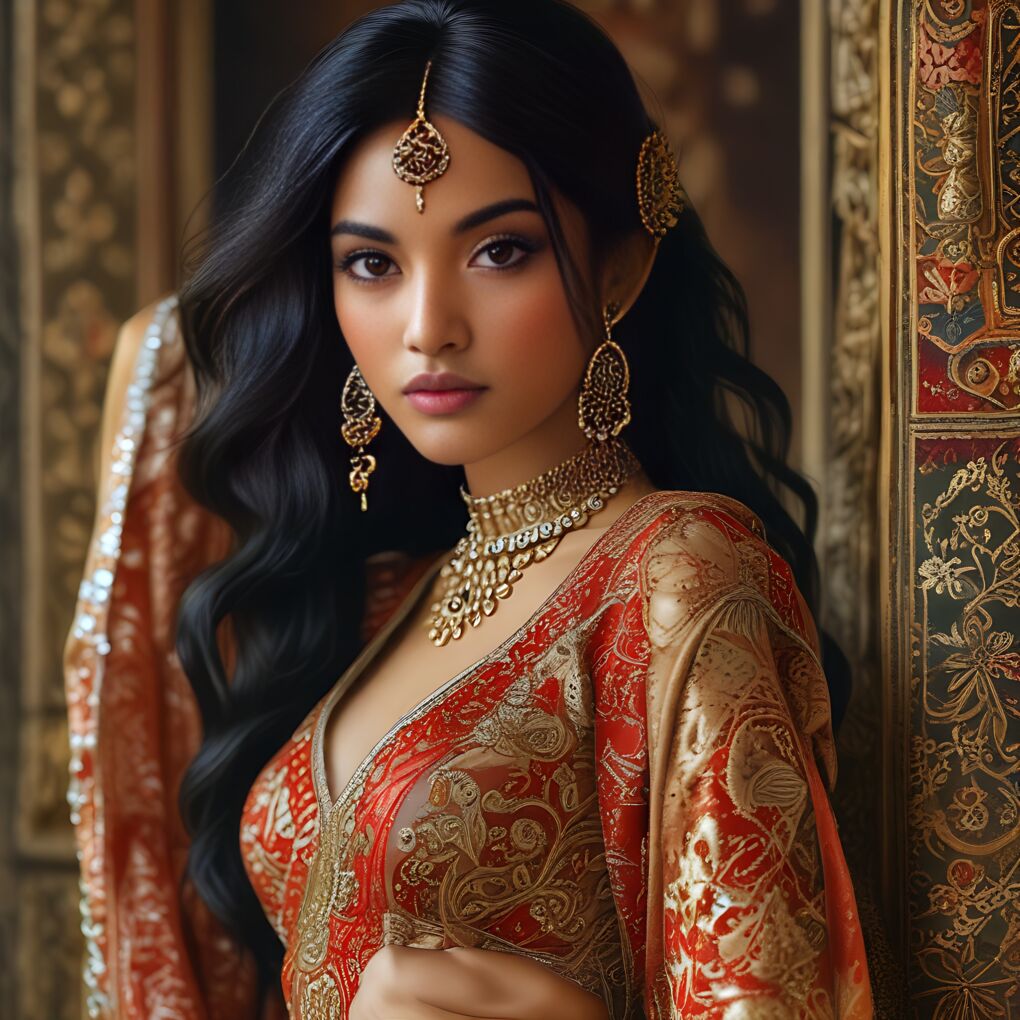
The Silk Road: A Journey Through Time
To truly appreciate the essence of Asian fashion, we must delve into its storied past. The Silk Road, an ancient network of trade routes that connected Asia with the Middle East and Europe, played a pivotal role in the exchange of not only goods but also cultural traditions and sartorial influences.
“The Silk Road was not only the artery for trade but also the vein through which culture flowed.” – Sarvenaz Bahrami, Fashion Historian
Along this legendary route, merchants and travellers exchanged ideas, techniques, and materials, shaping the evolution of fashion across continents. Chinese silk, renowned for its luxurious texture and vibrant colours, became a coveted commodity, adorning the garments of nobility and influencing design aesthetics worldwide.
The Art of Silk Weaving
The art of silk weaving has been an integral part of Asian culture for centuries, with techniques passed down from generation to generation. One of the most renowned silk weaving traditions is the Chinese Jacquard weaving, which involves intricate patterns created by a loom controlled by a series of punch cards.
Pro Tip: Look for authentic Chinese silk garments featuring Jacquard weaving for a truly luxurious and culturally significant piece.
Cultural Traditions and Modern Interpretations
Asian fashion is deeply rooted in the rich tapestry of cultural traditions that have been woven into its fabric for centuries. From the elegant kimono of Japan to the intricate sari of India, each garment tells a story of heritage, symbolism, and artistry.
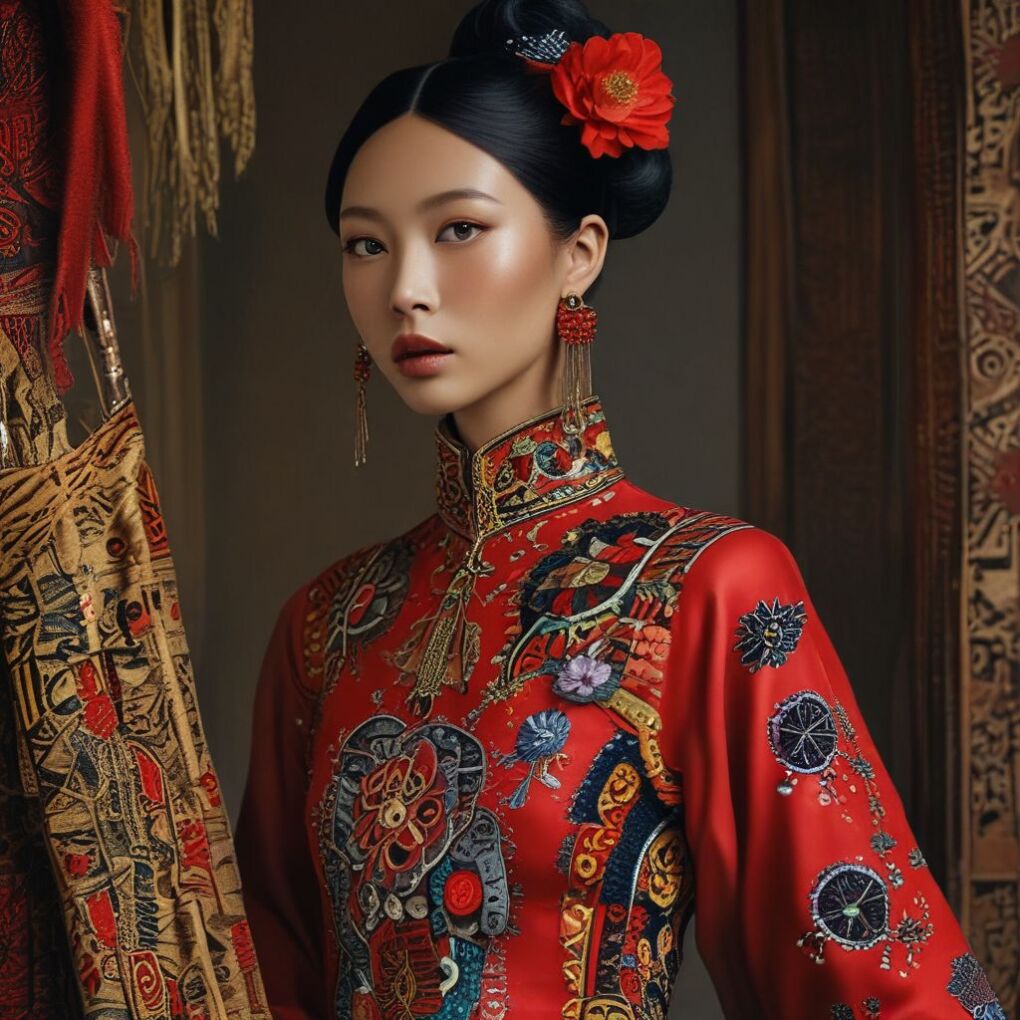
The Kimono: A Symbol of Japanese Elegance
The kimono, a traditional Japanese garment, is a prime example of how fashion can embody the essence of a culture. With its intricate patterns, delicate embroidery, and intricate folding techniques, the kimono has transcended its functional purpose to become a true art form.
| Kimono Style | Description |
|---|---|
| Furisode | Long-sleeved kimono worn by unmarried women |
| Tomesode | Formal kimono with intricate designs |
| Iromuji | Solid-colored kimono for formal occasions |
Today, the kimono has evolved beyond its traditional roots, inspiring modern designers to incorporate its elegant silhouettes and intricate patterns into contemporary fashion. One such designer is Samantha Sung, whose “Kimono Jacket” collection features modern interpretations of the traditional garment, blending Japanese aesthetics with Western silhouettes.
Pro Tip: Invest in a high-quality kimono or kimono-inspired piece for a touch of timeless elegance and cultural appreciation.
The Sari: An Indian Masterpiece
The sari, a quintessential garment of Indian culture, has captivated fashion enthusiasts worldwide with its vibrant colours, intricate draping techniques, and rich symbolism. Each region of India boasts its unique sari styles, from the lightweight and colourful Banarasi to the exquisite Kanchipuram silk saris.
“The sari is not just a garment, it’s a celebration of India’s diverse heritage and artistry.” – Anita Dongre, Indian Fashion Designer
Contemporary Indian designers have embraced the sari’s versatility, reinterpreting it with modern cuts, bold prints, and innovative draping styles, appealing to a global audience while preserving its cultural significance. One such brand is Satya Paul, renowned for its vibrant and avant-garde sari designs that blend tradition with contemporary flair.
Pro Tip: Experiment with different draping styles and accessorize your sari with statement jewellery for a truly modern and stylish look.
The Hanbok: Korea’s Traditional Beauty
The hanbok, Korea’s traditional attire, is a stunning representation of Asian fashion’s rich cultural heritage. With its intricate designs, vibrant colours, and symbolic elements, the hanbok has captivated fashion enthusiasts worldwide.
One contemporary brand that has embraced the hanbok’s beauty is Leesle, offering modern interpretations of the traditional garment. Their “Modern Hanbok” collection features sleek silhouettes and contemporary designs while preserving the essence of Korean culture.
Pro Tip: Pair a modern hanbok-inspired dress or top with minimalist accessories for a chic and culturally inspired look.
Asian Fashion Influencers
In recent years, Asian fashion has gained global recognition, with the region’s designers, influencers, and celebrities taking centre stage. These trailblazers have not only showcased the beauty and diversity of Asian fashion but have also challenged stereotypes and paved the way for inclusivity in the industry.
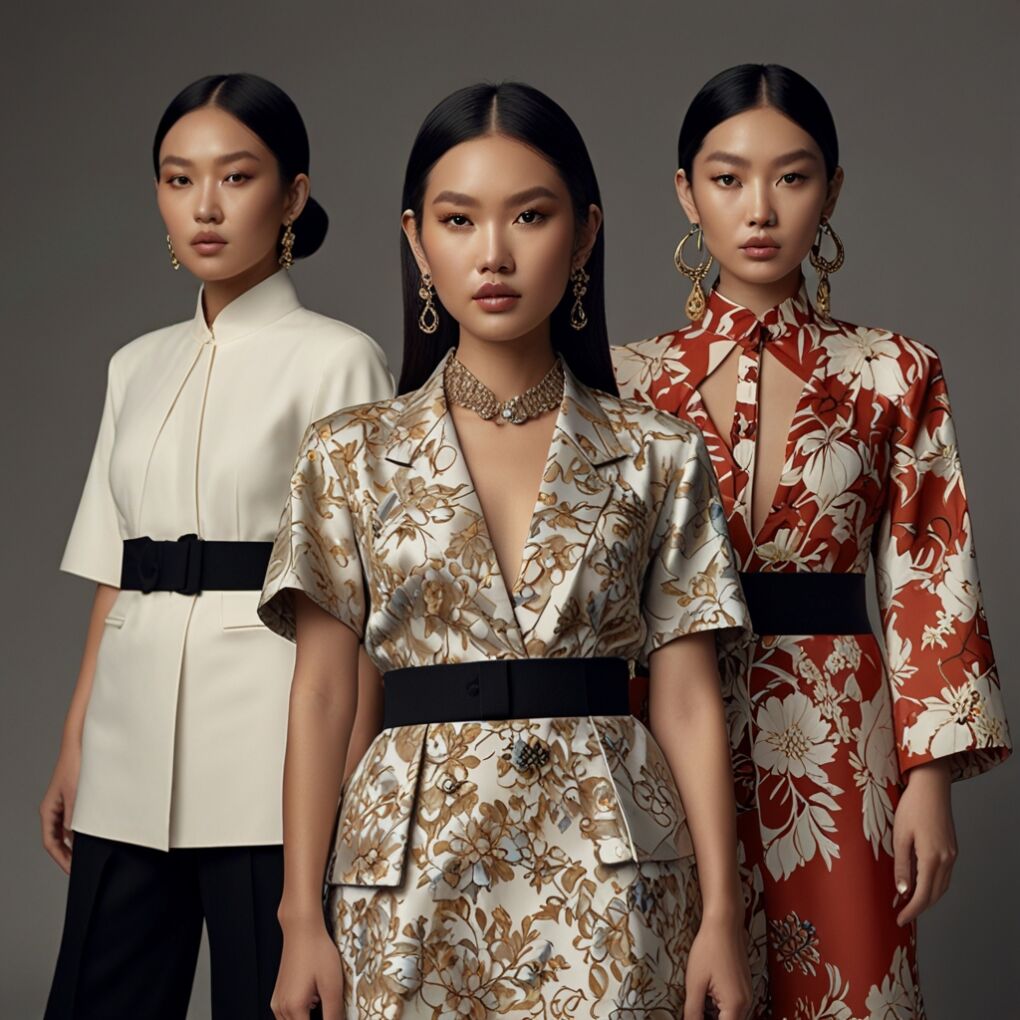
Asian Fashion Designers Making Waves
- Vivienne Tam: A Hong Kong-born designer known for her fusion of Eastern and Western aesthetics, creating iconic pieces that celebrate her Chinese heritage.
- Prabal Gurung: A Nepali-American designer whose collections blend modern silhouettes with elements of his Nepalese and Indian roots.
- Guo Pei: The Chinese couturier who gained international acclaim for her intricate designs, including the iconic “Golden Lotus” gown worn by Rihanna at the Met Gala.
Social Media Influencers Shaping Asian Fashion Trends
Social media has played a pivotal role in amplifying the voices of Asian fashion influencers and their impact on global trends. Here are a few notable names:
- Susanna Lau (Susie Bubble): A prominent fashion blogger and influencer from the UK with Chinese-Malaysian roots, known for her avant-garde style.
- Aimee Song: A Korean-American fashion blogger and designer, whose chic and effortless style has garnered a massive following.
- Bryanboy: A Filipino fashion blogger and influencer, renowned for his fearless and boundary-pushing outfit choices.
Pro Tip: Follow your favourite Asian fashion influencers on social media to stay up-to-date with the latest trends and styling inspiration.
The Future of Asian Fashion
As the world becomes increasingly interconnected, the influence of Asian fashion is poised to grow even stronger. With a rich cultural heritage and a dynamic creative spirit, the future of Asian fashion promises to be a vibrant tapestry of innovation, inclusivity, and global appeal.
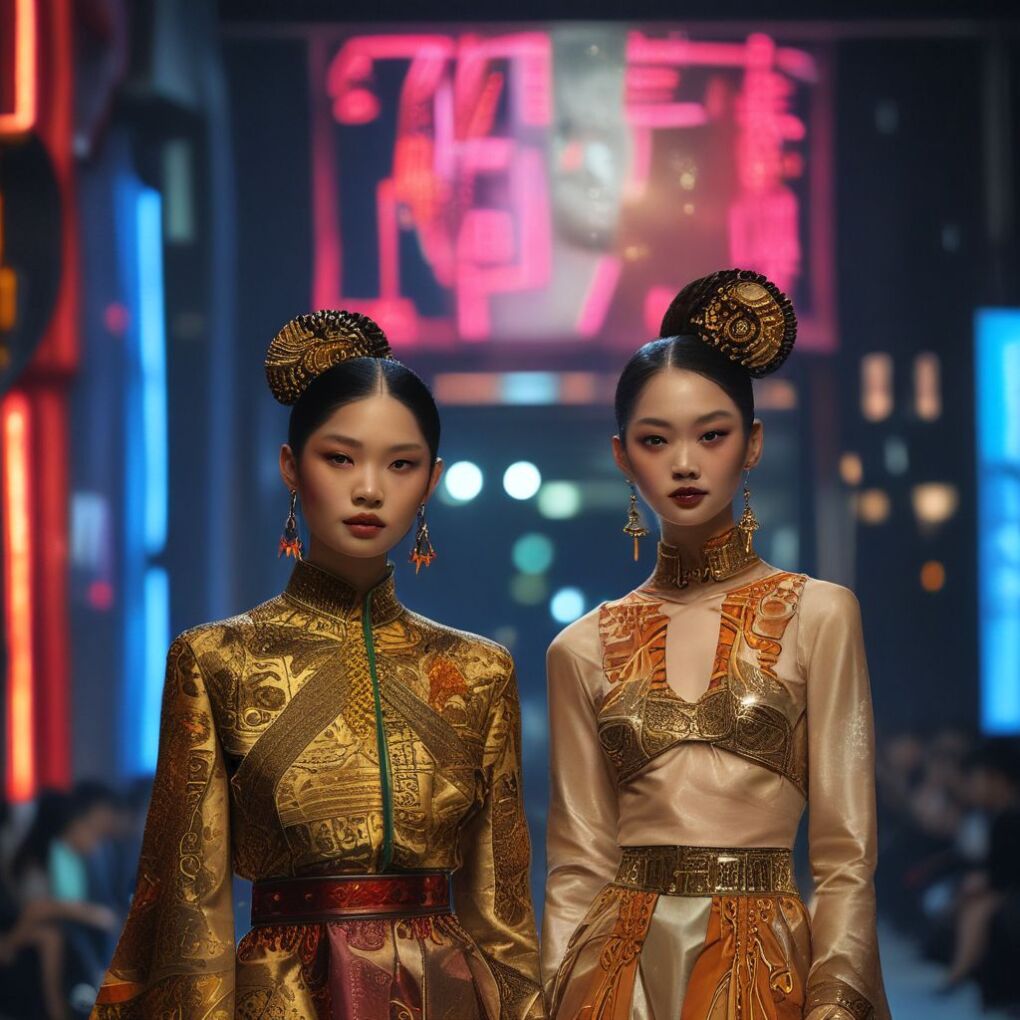
- Sustainable and Ethical Fashion: As consumers become more conscious of the environmental and social impact of the fashion industry, Asian brands and designers are embracing sustainable and ethical practices, incorporating traditional techniques and locally sourced materials into their collections. One such brand is Katharine Hamnett, a British designer known for her sustainable and ethical approach to fashion, often incorporating traditional Asian textiles and techniques.
- Fusion and Experimentation: The fusion of traditional and contemporary elements will continue to shape the future of Asian fashion, with designers pushing boundaries and experimenting with new materials, silhouettes, and cultural influences. A prime example is IISE, a South Korean brand that blends traditional Korean design elements with modern streetwear aesthetics.
- Global Representation and Inclusivity: The fashion industry is recognizing the importance of representation and diversity, paving the way for more Asian models, designers, and influencers to take center stage and showcase the beauty and versatility of Asian fashion on a global scale. Brands like Prabal Gurung and Guo Pei have been at the forefront of this movement, celebrating their cultural roots while achieving international recognition.
The Rise of Asian Fashion Capitals
While fashion capitals like Paris, Milan, and New York have long held sway over the industry, Asian cities are rapidly gaining recognition as emerging fashion hubs. These cities are not only showcasing their local talents but also attracting international attention with their vibrant fashion scenes.
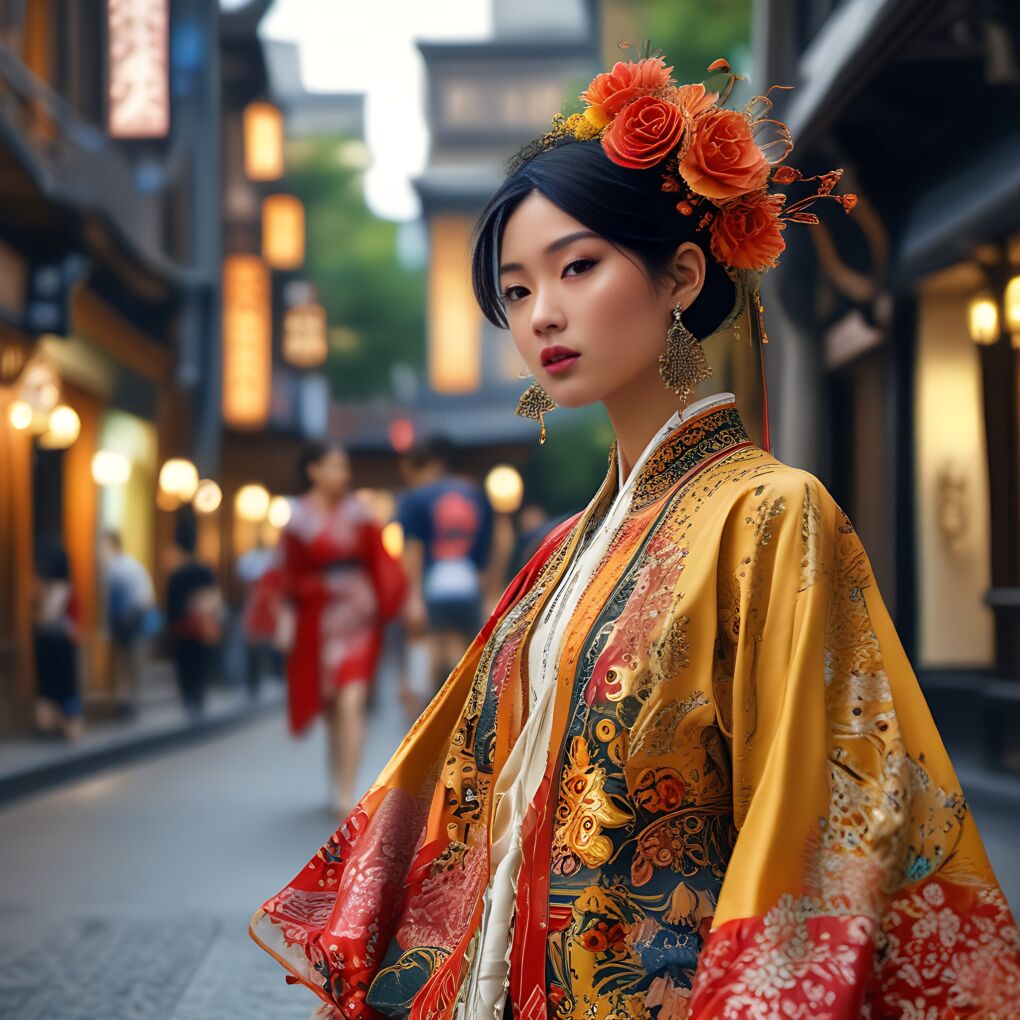
Tokyo: A Fusion of Tradition and Avant-Garde
Tokyo, the capital of Japan, has long been known for its unique blend of traditional aesthetics and cutting-edge avant-garde fashion. The city’s iconic fashion districts, such as Harajuku and Shibuya, have become playgrounds for fashion experimentation, where bold styles and subcultures thrive.
One brand that embodies the spirit of Tokyo’s fashion scene is Comme des Garçons, founded by the visionary designer Rei Kawakubo. Known for its deconstructed silhouettes and unconventional designs, Comme des Garçons has challenged traditional fashion norms and influenced designers worldwide.
Pro Tip: Embrace the avant-garde spirit of Tokyo fashion by experimenting with bold color combinations, asymmetrical cuts, and unexpected layering.
Seoul: The K-Fashion Phenomenon
South Korea’s capital, Seoul, has emerged as a major fashion force, thanks to the global phenomenon of K-Pop and the resulting “Korean Wave” (Hallyu). The city’s fashion scene is a vibrant mix of streetwear, luxury, and traditional Korean influences, catering to a diverse array of styles.
One brand that has captured the essence of K-Fashion is Youser, known for its sleek and minimalist designs with a touch of Korean elegance. Their collections often feature clean lines, muted color palettes, and innovative fabric choices, reflecting the modern and sophisticated aesthetic of Seoul’s fashion scene.
Pro Tip: Stay on top of K-Fashion trends by following your favorite K-Pop idols and their stylists for inspiration.
Mumbai: The Epicenter of Indian Fashion
Mumbai, the bustling commercial capital of India, has long been a hub for the country’s thriving fashion industry. From the glamorous Bollywood film industry to the vibrant textile markets, Mumbai is a melting pot of style and creativity.
One designer who has put Mumbai on the global fashion map is Sabyasachi Mukherjee, renowned for his exquisite bridal wear and traditional Indian craftsmanship. Sabyasachi’s designs are a celebration of India’s rich cultural heritage, featuring intricate embroidery, luxurious fabrics, and timeless silhouettes.
Pro Tip: Invest in a stunning Sabyasachi sari or lehenga for a truly luxurious and culturally significant addition to your wardrobe.
Bridging the Gap: East Meets West
As Asian fashion continues to gain global recognition, collaborations between Eastern and Western designers and brands have become increasingly common, blurring the lines between cultural influences and creating exciting new sartorial fusions.
Iconic Collaborations:
- Adidas x Palace Skateboards: This collaboration between the German sportswear giant and the London-based skate brand resulted in a streetwear collection that blended Adidas’ iconic designs with Palace’s irreverent and bold aesthetic.
- Issey Miyake x Hermès: The legendary Japanese designer Issey Miyake joined forces with the French luxury house Hermès to create a capsule collection that merged Miyake’s innovative textile techniques with Hermès’ timeless elegance.
- Uniqlo x Marni: The Japanese retailer Uniqlo collaborated with the Italian luxury brand Marni, offering accessible and stylish pieces that combined Uniqlo’s functional basics with Marni’s signature playful prints and designs.
Pro Tip: Keep an eye out for exciting East-West collaborations and limited-edition capsule collections to add unique and fashion-forward pieces to your wardrobe.
Conclusion
Asian fashion is a captivating tapestry woven from the threads of rich cultural heritage, innovative design, and global influence. As we explore its vibrant landscape, we discover not only the beauty of garments but also the stories they tell – stories of tradition, artistry, and identity. From the elegant kimono to the vibrant sari, from the fusion of East and West to the sustainable and ethical practices of the future, Asian fashion continues to inspire and captivate audiences worldwide, reminding us that fashion is more than just clothes – it is a language that transcends borders and unites us in our shared appreciation for creativity and self-expression.
